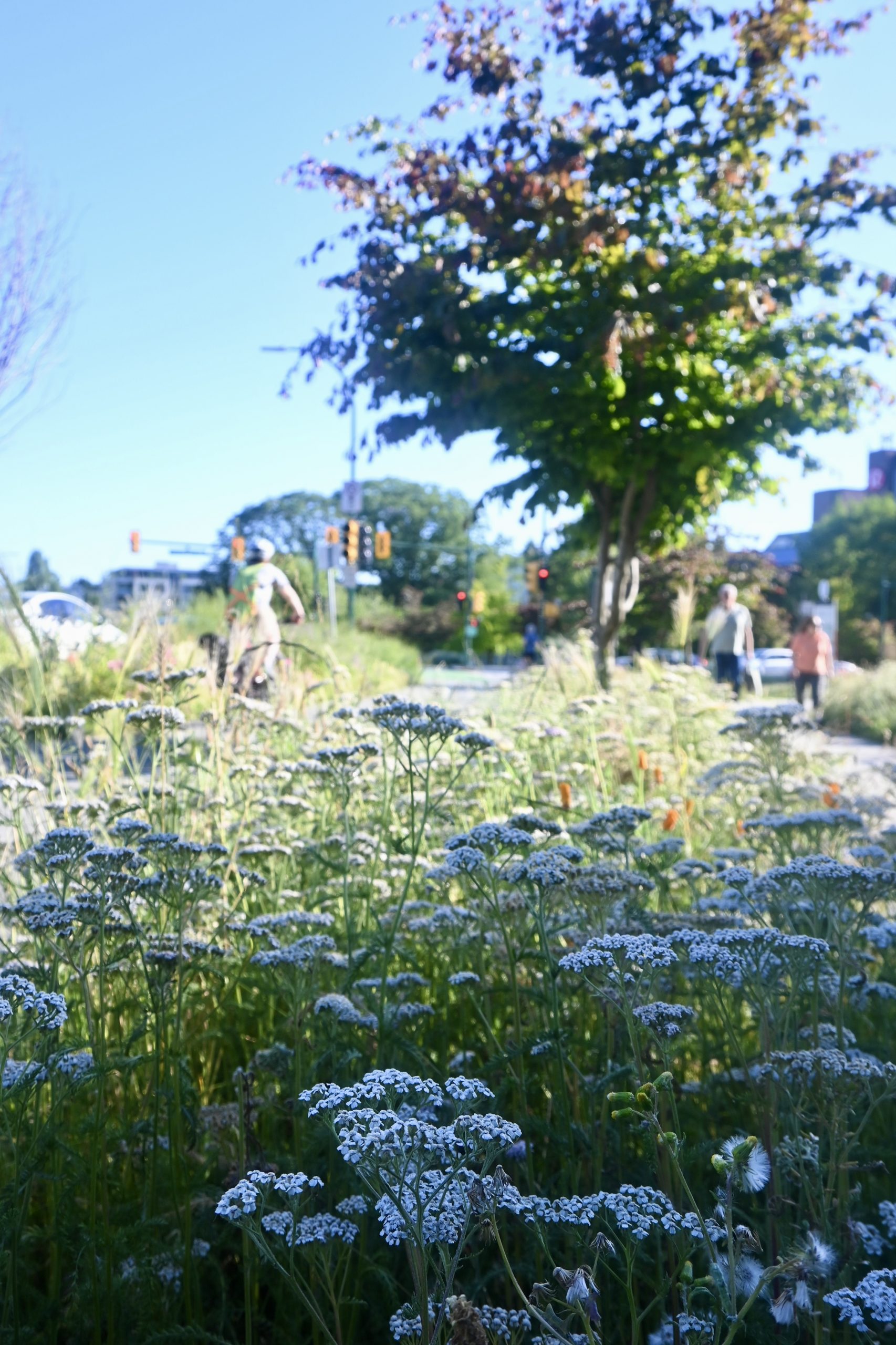Meadow establishment
Meadows can be established on sunny and open sites with good air circulation and are appropriate for southwest and east facing conditions. The following are best practices for meadow establishment, as advised by¹.
- Seed in spring or early summer to produce growth same season, seed in fall for germination the following spring
- Avoid extremely sandy or clayey soils, sawdust, bark mulch, or wood chips in meadow sites as they can remove nitrogen from the soil during decomposition.
- Eliminate existing vegetation – cardboard can be installed under mulch and is a good technique for clearing vegetation.
- Seed site either by hand or mechanically for larger areas
- Cover seed with 1-2 inches of straw
- Water site regularly in the spring for 6-8 weeks. For fall seedlines, no water is needed.
- Manage the meadow for weeds by thinning overtime. In the long term, meadows can be left with seed heads to encourage wildlife and visual winter interest or can be mowed within an inch of ground and burned in early spring to reestablish meadow
Meadow case studies
UBC Reconciliation Pole meadow | Vancouver, BC
As a pilot project during 2023, UBC removed the typical lawn of Main Mall to be replaced by a native meadow surrounding the Reconciliation pole. Clarkia amoena (farewell-to-spring) cultivar is the first plant to emerge in the UBC native meadow mix; the meadow will change in typology as other plants are established, and the meadow is thinned, including Camas species. Clarkia is drought tolerant with a long bloom time and needs well-drained soils. The meadow replaced a patch of lawn and was seeded in the fall of 2023. Photos taken in June 2024.
The debate around using native meadow cultivars to attract pollinators is still an ongoing debate, however, the OSU Garden Ecology lab did not see any trends between pollinator visitation between Northwest natives and cultivars, except in the case of Clarkia amoena in which pollinators in five groups preferred the species over the cultivar² . As quoted below by Jen Hayes of the lab:
“A lot of plants and pollinator groups didn’t show a difference in visitation,” Hayes said. “That was the case with more of our findings than anything else. Some pollinators have a clear preference, and some don’t. Sometimes they prefer one plant and sometimes they don’t. Again, it comes down to ‘It depends.’
Boulevard bikeway meadow at Burrard Street and Cornwall Avenue | Vancouver, BC
The City of Vancouver Parks Board manages 25 naturalized meadows across golf courses and parks around the city³. At the intersection of Burrard Street and Cornwall Avenue, an effort to plant low maintenance wildflowers has replaced reliance on typical lawn, benefited pollinators, and added seasonal joy to the area. Under Parrotia persica (Persian ironwood) boulevard trees emerge Achillea millefolium (yarrow) and Eschscholzia californica (California poppy) as a dominant species. The photos below were taken in the meadow’s second year of establishment during early July of 2024.
1. Reed, Sue. Energy-wise Landscape Design – A New Approach for your Home and Garden. 2010.
2. Pokorny, Kym. The debate over native plants and their cultivars gathers steam. Oregon State University Extension, 2023.
3. City of Vancouver. Pollinator Meadows. Parks, Gardens, and Beaches, 2024.


